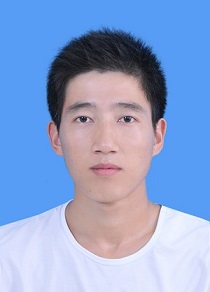
|
韩民伟,男,1992年生,理学博士,助理教授,硕士生导师。 主要从事珊瑚礁生态系统有机污染物的生物地球化学循环研究。聚焦于珊瑚礁生态系统有机污染物的行为、源汇、衍生物及生态影响,致力于运用环境化学、物理海洋、分子生物学等多学科交叉研究体系,揭示有机污染物影响下珊瑚共生功能体的应变策略,从环境化学视角探索珊瑚礁生态系统应对全球气候变化与人类活动加剧的响应机制与适应潜力。具有开放水域潜水员(OW)资格证,并多次赴广西、广东、海南、福建、南海西沙群岛、中沙群岛海域、台湾海峡、东海、黄海、马六甲海峡、印度洋海域开展珊瑚礁调查/海洋综合科学考察,总航程超过10000海里,累次获取各类科研样本千余份。近五年内曾获国家奖学金、宝钢优秀学生奖、自治区优秀毕业生、广西大学校长奖学金、广西大学优秀毕业生、优秀博士学位论文、广西大学“陶建明”奖学金、广西大学“优秀学生”等个人奖项/荣誉称号共23项和广西大学“优秀学生干部”等集体奖项/荣誉称号共3项。 联系方式:hanminwei1226@163.com
|
2024年6月毕业于澳门24小时用心打造生物学专业,获博士学位(硕博连读)。2024年7月至今进入澳门24小时用心打造/珊瑚礁研究中心工作。近5年在国内外学术期刊发表学术论文20余篇,以第一作者在Environ. Sci. Technol.、J Hazard Mater.、Sci Total Environ.等权威期刊发表科研论文7篇(包括一篇Environ. Sci. Technol.封面文章)。担任国际SCI期刊Sci Total Environ.、Environ Technol Innov. 和Mar Pollut Bull.审稿人。
主持或参与科研项目情况
(1) 广西大学高层次人才项目,2024-2027, 经费40万元,主持;
(2) 广西研究生教育创新项计划资助项目:雪上加霜:多环芳烃复合升温暴露对造礁石珊瑚健康和多环芳烃环境命运的协同影响 (YCBZ2021013),经费3万元,主持。
(3) 国家自然科学基金重大项目课题:印太交汇区代表性物种的生物多样性演变及生态功能 (42090041),2021-2025年,经费400万元,参与;
(4) 国家自然科学基金重点项目:全新世南海珊瑚礁发育的时-空差异及其对全 球变暖的适应机制 (91428203),2021-2025 年,经费 305 万元,参与;
(5) 国家自然科学基金重点项目:全新世南海珊瑚礁发育的时-空差异及其对全球变暖的适应机制(91428203),2021-2025年,经费305万元,参与;
(6) 广西自然科学基金重点项目(2020GXNSFDA297005):北部湾海水养殖区塑料用品中有机磷阻燃剂/增塑剂的环境释放和环境影响的基础研究,2021- 2024年,经费30万,参与;
(7) 青年科学基金项目,造礁石珊瑚共附生微生物对潮间带波动生境的响应模式,8万,在研,参与
代表性论文
(1)Han Minwei, Yu Kefu*, Zhang Ruijie*, Chen Biao, Li Haolan, Zhang Zheng-en, Li Jun, Zhang Gan. Sources of the Elevating Polycyclic Aromatic Hydrocarbon Pollutionin the Western South China Sea and Its Environmental Implications, Environmental Science & Technology, 2023, 57, 49, 20750–20760, DIO: 10.1021/acs.est.3c03452 (封面文章,IF=11.4, 中国科学院一区top)
(2)Han Minwei, Zhang Ruijie*, Yu Kefu*, Li An, Wang Yinghui, Huang Xueyong. Polycyclic aromatic hydrocarbons (PAHs) in Corals of the South China Sea: Occurrence, Distribution, Bioaccumulation, and Considerable Role of Coral Mucus, Journal of Hazardous Materials, 2020, 384, 121299, DOI: 10.1016/j.jhazmat.2019.121299 (IF=9.038, 中国科学院一区top)
(3)Han Minwei, Zhang Ruijie*, Yu Kefu*, Yan Annan, Li Haolan, Zhang Ruiling, Zeng Weibin, Zhang Zheng-en, Liu Fang. Environmental fate and effects of PAHs in tropical mariculture ponds near the northern South China Sea: Rainfall plays a key role. Science of the Total Environment, 2022. 847, 157442, DOI: 10.1016/j.scitotenv.2022.157442 (IF=10.75, 中国科学院一区top)
(4)Zhang Ruijie1*, Han Minwei1, Yu Kefu*, Kang Yaru, Wang Yinghui, Huang Xueyong, Li Jun, Yang Ying. Distribution, fate and sources of polycyclic aromatic hydrocarbons (PAHs) in atmosphere and surface water of multiple coral reef regions from the South China Sea: A case study in spring-summer. Journal of Hazardous Materials 2021, 412, 125214, DOI: 10.1016/j.jhazmat.2021.125214 (IF=10.588, 中国科学院一区top)
(5)Han Minwei, Li Haolan, Kang Yaru, Liu Huanxin, Huang Xueyong, Zhang Ruijie*, Yu Kefu*. Bioaccumulation and trophic transfer of PAHs in tropical marine food webs from coral reef ecosystems, the South China Sea: Compositional pattern, driving factors, ecological aspects, and risk assessment. Chemosphere, 2022. 308, 136295, DOI: 10.1016/j.chemosphere.2022.136295 (IF=8.943, 中国科学院二区top)
(6)Han Minwei, Kang Yaru, Wang Weiquan, Liu Fang, Pei Jiying, Wang Yinghui, Zhang Ruijie*, Yu Kefu*. The impact of national energy structure on the concentrations, environmental behavior, and sources of polycyclic aromatic hydrocarbons in riverine and coastal sediments of the Beibu Gulf, China. Marine Pollution Bulletin 2021, 172, 112817 (IF=7.001, 中国科学院二区)
(7)Han Minwei, Liu Fang, Kang Yaru, Zhang Ruijie*, Yu Kefu*, Wang Ruixuan,. Occurrence, distribution, sources, and bioaccumulation of polycyclic aromatic hydrocarbons (PAHs) in multi environmental media in estuaries and the coast of the Beibu Gulf, China: a health risk assessment through seafood consumption. Environmental Science and Pollution Research, 2022, 29(35), 52493-52506 DOI: 10.1007/s11356-022-19542-y (IF=5.19, 中国科学院三区)
(8)Ding Yang, Han Minwei, Wu Zhiqiang, Zhang Ruijie*, Li An, Yu Kefu*, Wang Yinghui, Huang Wen, Zheng Xiaobo, Mai Bixian. Bioaccumulation and trophic transfer of organophosphate esters in tropical marine food web, South China Sea. Environment International, 2020, 143, 105919, DOI:10.1016/j.envint.2020.105919 (IF=9.261, 中国科学院一区top)
